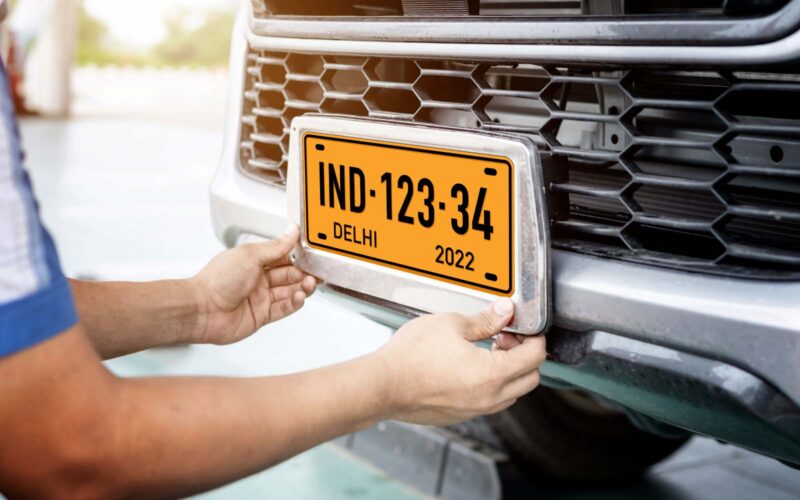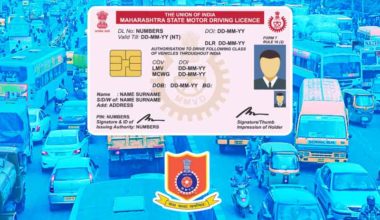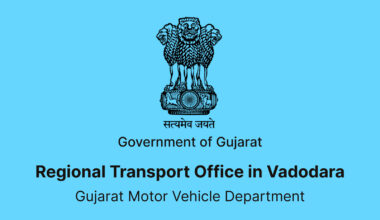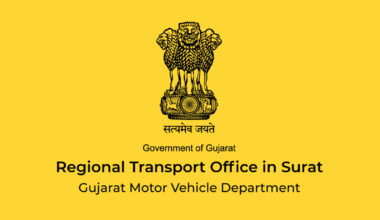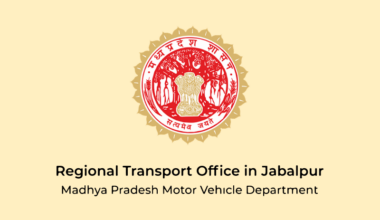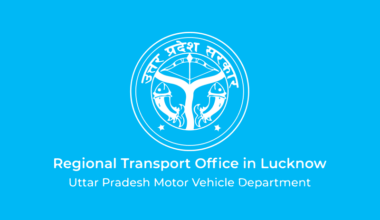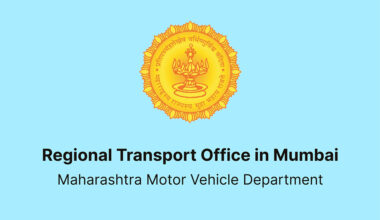Vehicle number plates are essential for the efficient functioning of road transport in India. They serve as vital “identity cards” for vehicles, playing a crucial role in maintaining traffic flow and ensuring law enforcement and public safety. Vehicle number plate is also referred to as “license plate number” and is securely attached to both the front and rear of a vehicle. It serves as a visual display of the vehicle’s unique registration number. The lettering and numbering on the vehicle number plate provide specific information about the vehicle in question.
In this article, we will delve into these various types of number plates in India, exploring their significance and relevance. Furthermore, we will provide valuable insights into the process of obtaining vehicle owner details by number plate.
What are the Components of Vehicle Number Plates?
A vehicle number plate consists of several components that provide specific information about the vehicle. Let’s understand these components in detail:
- Part 1: The first part of the vehicle number plate represents the state or union territory where the vehicle is registered. This is denoted by a two-letter code, such as “MH” for Maharashtra or “DL” for Delhi. These codes are derived from the state or UT names and were introduced in the 1980s.
- Part 2: The second part comprises two digits that indicate the sequential number assigned to the district where the vehicle is registered. Each district has its own Regional Transport Office (RTO) responsible for vehicle registration within its jurisdiction.
- Part 3: The third part of the license plate number is a unique alphanumeric code that distinguishes each vehicle. If unique numbers are exhausted, the registering authority may use an alphabet to replace the last digit. Obtaining a custom number plate often requires paying a premium price.
- Part 4: The final component of the plate is an oval symbol containing the letters “IND,” representing India. In High-Security Registration Plates (HSRP), this oval symbol may include a chromium hologram resembling a “Chakra.”
By understanding these components, one can effectively perform a number plate check to get essential information about the vehicle’s registration, origin, and identification.
What are the Different Types of Vehicle Number Plates?
Vehicle number plates are characterised by a variety of colours, serving as informative identifiers for the vehicles they are affixed to. These number plates come in different types, each designed with distinct purposes and features.
Let’s explore the various types of number plates in India:
- White number plates: Commonly seen, white number plates with black font indicate privately-owned vehicles not used for commercial purposes.
- Yellow number plates: Used for commercial vehicles like taxis and trucks, these plates have a yellow background and black font. However, the drivers of these vehicles must possess a valid commercial driving permit.
- Green number plates: Electric vehicles display green number plates, distinguishing them as environmentally friendly. Commercial electric vehicles have yellow lettering, while private electric vehicles have white lettering.
- Black number plates: Often associated with luxury hotel transport, black vehicle number plates with yellow font represent commercial vehicles that can be driven without a commercial driving permit.
- Red number plates: Temporary registration plates for brand-new cars, red number plates have a white font and are valid for one month.
- Blue number plates: Reserved for vehicles of foreign diplomats, blue plates with white font carry special codes representing diplomatic organisations such as the UN (United Nations), DC (Diplomatic Corps) etc. and country codes instead of state codes. Here is a table that displays the respective country codes:
- Number plates with upward-pointing arrow: Military vehicles have yellow plates with black font, featuring an upward-pointing arrow as a prefix, indicating their unique identification system.
- Red number plates with India’s Emblem: Official vehicles of high-ranking government officials, such as the President and Vice President, bear red plates with white font and India’s emblem in the centre.
New Number Plates Registration: How to Apply for New Number Plates?
To legally drive a vehicle in India, it must be registered under the Motor Vehicles Act of 1988. When purchasing a new vehicle, a temporary vehicle registration plate is issued which is valid for one month. Within this period, the owner must visit the Regional Transport Office (RTO) to complete the official registration and obtain a standard license plate number. It is important not to drive the vehicle on public roads before obtaining the official registration to avoid fines.
The RTO verifies vehicle details and required documents, such as the roadworthiness certificate, sales invoice, driving licence, and PUC. Commercial vehicles may need additional documents. After completing the new number plate registration process, the vehicle owner receives a unique vehicle number plate. The assigned number remains valid for 20 years. Individuals can conduct a number plate check to verify the registration status and details of a vehicle.
What Is the Bharat Series (BH) Vehicle Number Plate?
The Ministry of Roads, Transport, and Highways (MoRTH) introduced the Bharat Series (BH) vehicle number plates to simplify the process of obtaining a new number plate when relocating to a different state in India. Eligible individuals, such as Indian citizens, defence officers, bank employees, government employees, and private firm employees with offices in multiple states, can use BH new number plates nationwide without the need for re-registering their vehicles. These plates are specifically designed for non-transport vehicles, featuring a unique format (YY BH #### XX). The BH series significantly reduces the time, effort, and paperwork involved in obtaining new number plates when moving between states.
What Is the High Security Number Plate (HSRP) Vehicle Number Plate?
MoRTH and Delhi Transport Department have made it mandatory for vehicles sold before April 2019 to have a High-Security Registration Plate (HSRP) and a colour-coded plate. Following April 2019, the HSRP features are already integrated into the license plate numbers. HSRP is an aluminium plate with an Ashoka Chakra hologram and a 10-digit Permanent Identification Number (PIN). The process to apply for the HSRP new number plates is simple and can be done online. Heavy fines are imposed for non-compliance with the requirement of obtaining HSRP new number plates, ranging from Rs. 5,000 to Rs. 10,000.
HSRPs are designed to be tamper-proof and electronically linked to the vehicle they are installed on. This enhances the security and traceability of the vehicle, making it easier for authorities to track and identify the registered vehicle.
Font Variation and Vehicle Category Codes
The font used in vehicle number plates should be clear and easily readable from a distance. It is important to follow the new number plate rule, which requires the use of HSRP number plates instead of fancy fonts, stickers etc. In some states, the first digit of the district code on the number plate is replaced with a specific letter representing the vehicle category. The alphabets used and their corresponding vehicle categories are:
| Alphabets | Vehicle Category |
| C | Cars and SUVs |
| S | Two-wheelers |
| E | Electric vehicles |
| P | Passenger vehicles (such as buses) |
| R | Three-wheeler rickshaws |
| T | Tourist-licensed vehicles |
| V | Vans and pickup trucks |
| Y | Vehicles for hire |
Under the Motor Vehicles Act of 1988, all motorised vehicles in India must have valid RTO registrations and license plate numbers. To combat fraudulent activities and ensure clarity, the Ministry of Roads and Highways (MoRTH) has introduced amendments to the existing vehicle registration plate rules.
The new number plate rules are effective from 1st October 2020, which also include prohibiting the use of regional languages and non-standard characters on vehicle number plates.
- Driving a new motor vehicle with a paper-printed temporary registration number is now considered an offence.
- Temporary number plates will have red alpha numerals on a yellow background, replacing the previous colour scheme.
- The usage of regional languages, VIP numbers sold or auctioned by states or Union Territories, and any characters other than basic English letters and Arabic numerals is now prohibited.
- The Central Motor Vehicles Rules (CMVR) have been updated to specify the size, thickness, and spacing of characters on the number plate. The parameters are 65 mm, 10 mm, and 10 mm, respectively, applicable to all motor vehicles except two and three-wheeled vehicles.
- BS-VI four-wheelers will have a 1 cm green-coloured layer on the number plate, accompanied by a sticker indicating whether the vehicle runs on diesel, CNG, or petrol. Diesel vehicles will bear an orange-coloured sticker, while CNG and petrol vehicles will have a blue-coloured sticker.
Vehicle Owner Details by Number Plate: How To Find the Registered Owner Of a Vehicle?
Finding the registered owner of a vehicle can be done through a vehicle number plate check. You can easily trace vehicle owner by number plate using the VAHAN website. The website serves as a central vehicle registry and provides comprehensive information about registered vehicles. By using this website, RTOs in India can access the vehicle owner details by number plate.
To check the owner name by vehicle number, visit the VAHAN website, enter the vehicle registration number, and complete the verification process. The website provides information such as the owner’s name, vehicle class, fuel type, registration date, insurance details, and more.
Additionally, you can also retrieve vehicle owner name by vehicle number, and other important details via SMS:
- Type VAHAN <add space> vehicle’s registration number
- Send it to 7738299899
Getting access to the vehicle owner details by number plate can be crucial in various situations, such as hit-and-run cases or when verifying the authenticity of a second-hand vehicle, or obtaining a No Objection Certificate (NOC) for interstate moves. To safeguard the vehicle owner’s personal information, the home address is not accessible on the online VAHAN portal.
Conclusion
Vehicle number plates are crucial for identifying and regulating vehicles on Indian roads. By understanding and complying with number plate regulations, you contribute to safer roads and a well-regulated transportation system in India.


